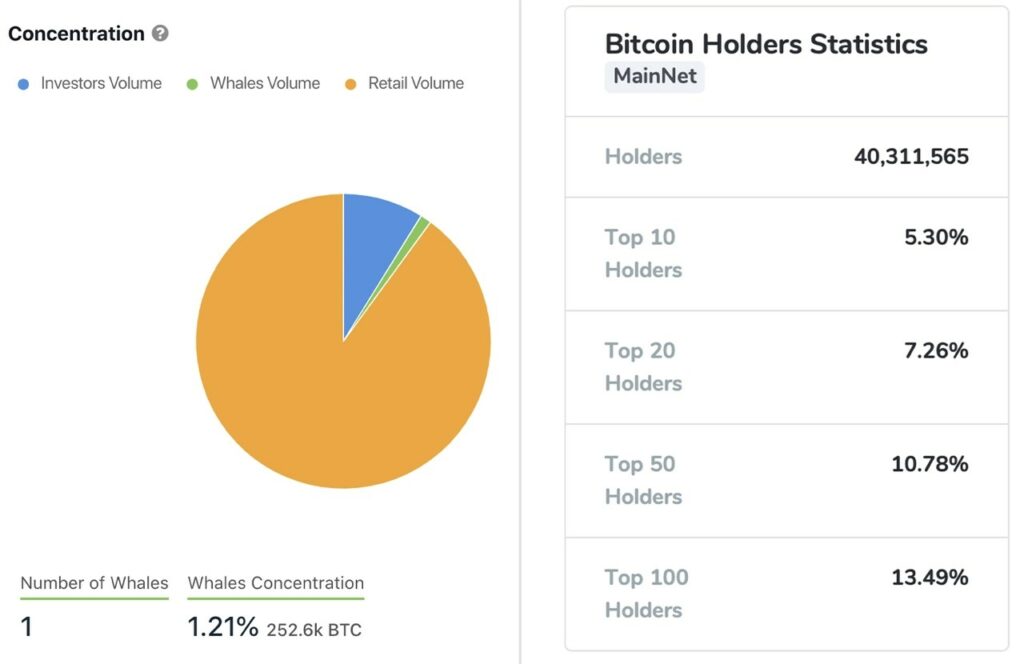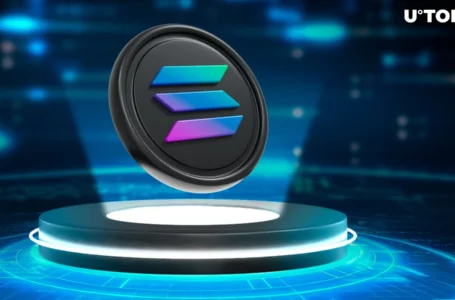
Three months ago the crypto economy was worth more than $3 trillion and since then, digital currency prices have slid a great deal in value, as crypto assets have been sold and distributed across many hands. Over the last decade, fluctuating price cycles have made it so some addresses, typically referred to as crypto whales, have been able to accumulate vast quantities of coins. Moreover, a few crypto projects have also seen whales accumulate a majority of a token’s circulating supply via the initial distribution process.
Top 8 Crypto Assets by Concentration of Large Holders
The topic of whales is a popular topic in the cryptocurrency world, as entities have always been a force to be reckoned with. Whales are large holders of crypto assets that own more tokens than the average person, and they’re called whales because their giant holdings can move markets, much like whales in the ocean that can rock boats. and cause massive waves.
After more than a decade of people launching thousands of alternative crypto assets, years of digital currency trading, and the ever-changing price cycles, whale concentrations have changed over the years. The following is a look at the current concentration of large holders and crypto whales throughout the crypto economy’s top digital assets by market valuation. The concentration of large holders list and its onchain data derive from coincarp.com and intotheblock.com statistics.
Bitcoin (BTC) Concentration of Large Holders
The main crypto-asset bitcoin (BTC) is the oldest digital currency in the world based on blockchain technology, and it is assumed that BTC had a very fair distribution process. It is also speculated that Satoshi Nakamoto may own around 750,000 to 1 million BTC, which are in addresses containing unspent block rewards. This means that Satoshi’s stash is scattered and the inventor’s concentration of ownership is not easy to find. Measurements from Intotheblock.com show that the concentration of large BTC holders today is 10%.

Intotheblock.com leverages the “total holdings of whales (addresses that own more than 1% of the circulating supply) and Investors (addresses that own between 0.1% and 1% of the circulating supply).” Coincarp.com data on January 28, 2022, indicates that the top ten bitcoin addresses hold 5.30% of the current BTC supply in circulation. The top 20 largest BTC holders own 7.26% of the supply, and the top 50 bitcoin addresses own 10.78%. Onchain metrics further indicate that there are 40,301,661 bitcoin holders today.
Ethereum (ETH) Concentration of Large Holders
Ethereum metrics are different because Intotheblock.com stats show that the concentration of large holders is 42%, which is much higher than the whale concentration of BTC. Data from Coincarp.com shows that there are 185,912,265 Ethereum holders and the top ten ETH addresses hold 23.39% of the current supply. The top 20 ether holders own 27.06% of the supply and the top 50 own 33.02%. As for the top 100 wallet addresses by Ether balance, these hold 39.58% of the current ETH supply.
Binance Coin (BNB) Concentration of Large Holders
Binance coin’s (BNB) concentration of large holders data is not available on Intotheblock.com. Coincarp.com metrics, however, indicate that the top ten BNB addresses possess 88.23% of the supply. Onchain stats further show there are 321,134 BNB holders today. The top three BNB addresses are operated by Binance’s exchange platform, as the richest BNB holder is an exchange wallet with 52.02% of the BNB supply. The second-richest BNB wallet operated by Binance holds 27.14%, while 3.55% of the supply is also held by the third-largest address owned by the trading platform. BNB metrics indicate that more than 82% of the BNB supply is held by Binance operated wallets.
Cardano (ADA) Concentration of large carriers
According to statistics, there were 325,604 cardano (ADA) holders as of January 28, 2022. Measurements from Intotheblock.com show that the concentration of ADA by large holder data today is 17%. The data shows that the top 10 addresses hold 4.36% of the ADA supply, while the top 20 hold 5.86% of the supply. The richest ADA wallet currently has 1.37% of the ADA supply. 100 ADA holders hold 16.76% of the 34,186,794,009 ADAs in circulation today.
Xrp (XRP) Concentration of Large Holders
While XRP’s Intotheblock.com metrics are null, Coincarp.com data shows that the top ten holders own 78.02% of the XRP supply. The top five XRP wallets are operated by exchanges, as the richest wallet operated by Binance holds 26.91% of the XRP supply. The top 20 XRP wallets hold 80.93% of the supply, and the top 100 addresses currently possess 85.99% of the XRP in circulation today, which is currently around 47,736,918,345 tokens.
Solana (SOL) High Holders Concentration
Statistics show that there are currently 314,967,774 SOLs in circulation. The top ten addresses now hold 10.11% of SOL supply, while the largest holder holds 1.58% of SOL in circulation. The top 20 SOL wallets own 15.77%, the top 50 own 26.82%, and the top 100 solana (SOL) wallets own 34.64% of all existing SOLs. The number of wallets that hold a fraction of SOL or more today is 8,383,421 holders.
Usually, Concentrations of Crypto Whales Grow Larger
Data shows that the top eight coins by market valuation today have different concentrations of large holders known as whales. Stablecoins also have a concentration of large holders and the top ten tether (USDT) ERC20 wallets hold 26.79% of the current supply. The top ten usd coin (USDC) wallets currently hold 36.22% of the supply. 10.64% of the USDC supply is held by Maker dao while Binance holds 5.62% of all the ERC20-based tethers.
Proponents of digital currency do not like large concentrations of whale holders because they might dump their coins in the market to freak people out. It is well known that sometimes large holders of financial assets can collude and dump hordes of assets into the open market to drive down prices. While initially scaring the market, the whales eventually flee after a dump because they simply buy back when panic selling drives prices down. Traditionally, due to the concentration of large levels of holders and illiquid markets, crypto whales grow much larger after bear market cycles.


















